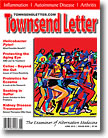Page 1, 2
In a 2008 experiment in an animal model, curcumin was found to significantly improve kidney function and protect against damage. Sprague-Dawley rats underwent a 5/6 nephrectomy with one whole kidney and 2/3 of the other removed. This simulates the condition of progressed renal disease in which much of the parenchymal tissue is no longer functional due to scarring and fibrosis. With this 1/3 of one kidney in a severe state of hyperfiltration, some rats in the group were treated with curcumin. Those rats that received curcumin had a reduction in proteinuria, BUN, and creatinine. 75% of the glomeruli in the untreated rats developed sclerosis, whereas only 11.2% of glomeruli of curcumin treated subjects showed sclerosis.24
Coenzyme Q10 is also effective at supporting a damaged kidney, possibly due to antioxidant activity or by increasing ATP supply to the nephrons.25 In one experiment with people on dialysis, patients were given CoQ10 and showed a decrease in creatinine and BUN. The number of people requiring dialysis at the end of 12 weeks decreased from 21 to 12 in the coenzyme Q10 group, whereas there were no changes in the 24 patients in the control group.26 A 2011 experiment in an animal model also showed significant renal preservation with the use of ubiquinol.27 As many FSGS patients are treated with statin medications and secondary heart disease is the number one cause of mortality among these patients, supplemental Q10 may especially be important for long-term health
Although saturated fats have been blamed for a myriad of problems, the kidneys naturally have a high concentration of myristic acid, palmitic acid, and stearic acid.28 Myristic acid from coconuts has been demonstrated to have a protective effect on the kidneys, reducing the necrosis in kidneys under stress.29 Along with omega-3 fatty acids, saturated fat appears to play an important role in kidney health. The patient would do well to avoid omega-6 fatty acids with a pro-inflammatory effect.28
One of the most overlooked treatments for FSGS is melatonin. As insomnia and renal disease often go hand in hand, melatonin production is severely impaired with advanced renal disease. A 2007 experiment in rats with reduced renal mass showed that melatonin not only reduced proteinuria and creatinine, but significantly slowed the deterioration of the kidney through glomerulosclerosis and tubular damage.30 The author also has many patients who report a much-improved quality of life through adequate sleep with melatonin supplementation. This is consistent with a survey that looked at 6834 employees of Osaka University and found that less than 5 hours of sleep per night was a strong predictor of proteinuria.31
One of the most important dietary interventions for patients is replacing coffee with green tea. Coffee has been demonstrated to increase proteinuria and progression of FSGS, and patients often have to admit that their urine looks less foamy with cessation of coffee.32 Green tea, in contrast, has anti-inflammatory properties and has been shown to arrest cardiac hypertrophy due to chronic kidney disease.33 As secondary heart disease is the number one cause of mortality in these patients, increased green tea consumption may greatly improve long-term survival.
In conclusion, FSGS is a condition that alternative practitioners should become familiar with. The process of sclerosis of the kidneys may have different etiologies and is often extremely resistant to conventional therapies. Natural therapies can offer new hope to patients faced with the potential of renal failure.

Notes
1. Hogg R, Middleton J, Vehaskari V. Focal segmental glomerulosclerosis- epidemiology aspects in children and adults. Pediatr Nephrol. 2007 Feb; 22(2):183–186.
2. NIDDK. Focal Segmental Glomerulosclerosis (FSGS) in Children and Young Adults Interventional Study. www.nih.gov.archives.niddk.nih.gov/patient/fsgs/fsgs.aspx. Accessed Feb.28, 2013. (Editor's Note: Use http://archives.niddk.nih.gov/patient/fsgs/fsgs.aspx)
3. Focal and segmental glomerulosclerosis [online article]. www.kidneypathology.com. www.kidneypathology.com/English_version/Focal_segmental_GS.html. Accessed Feb. 28, 2013.
4. Changriya K, Eggers, P, Kopp J. Twenty-one-year trend in ESRD due to focal segmental glomerulosclerosis in the United States. Am J Kidney Dis. 2004 Nov;44(5):815–825.
5. Bagby S. Developmental origins of renal disease: should nephron protection begin at birth? Clin J Am Soc Nephrol. 2009 Jan;4(1):10–13.
6. Sangle N. Kidney non-tumor Primary glomerular diseases diffuse mesangial hypercellularity with nephrotic syndrome [online article]. PathologyOutlines.com. www.pathologyoutlines.com/topic/kidneydiffusemesangial.html. Accessed Mar.3, 2013.
7. Strassheim D, Renner B, Panzer S, et al. IgM contributes to glomerular injury in FSGS. J Am Soc Nephrol. 2013 Feb;24(3):393–406.
8. Appel G, Cattran D. Treatment of primary focal segmental glomerulosclerosis [online article]. UpToDate. www.uptodate.com/contents/focal-segmental-glomerulosclerosis-in-the-transplanted-kidney. Accessed Mar. 3, 2013.
9. Musante L, Candiano G, Petretto A, et al. Active focal segmental glomerulosclerosis is associated with massive oxidation of plasma albumin. J Am Soc Nephrol. 2007 Mar;18(3):799–810.
10. Melamed M, Astor B, Michos E, Hostetter T, Powe N, Munter P 25-hydroxyvitamin D levels, race, and the progression of kidney disease. J Am Soc Nephrol. 2009 Dec;20(12):2631–2639.
11. Li R, Branton M, Tanawattanacharoen S, Falk R, Jennette J, Kopp J. Molecular identification of SV40 infection in human subjects and possible association with kidney disease. J Am Soc Nephrol. 2002 Sep;13(9):2320–2330.
12. Fernanda M, Alfredo C, Balatti V, Sabbioni S, Pancaldi C, Tognon M. Simian virus 40 in humans. Infect Agent Cancer. 2007;2:13; doi:10.1186/1750-9378-2-13.
13. Thomas D, Franceschini N, Hogan S, et al. Clinical and pathologic characteristics of focal segmental glomerulosclerosis pathologic variants. Kidney Int. 2006 Jan;69:920–926.
14. Markowitz G, Schwimmer J, Stokes M, et al. C1q nephropathy: a variant of focal segmental glomerulosclerosis. Kidney Int. 2003 Oct;64(4):1232–1240.
15. Radhakrishnan J. Endocrine disruption in the nephrotic syndrome [online article]. UpToDate. www.uptodate.com/contents/endocrine-dysfunction-in-the-nephrotic-syndrome. Accessed Mar 4, 2013.
16. Brennan D., Alachkar N., Kaplan A., Kwoh C. Focal segmental glomerulosclerosis in the transplanted kidney [online article]. UpToDate. www.uptodate.com/contents/focal-segmental-glomerulosclerosis-in-the-transplanted-kidney Accessed Mar 1, 2013.
17. Ponticelli C. Recurrence of focal segmental glomerular clerosis (FSGS) after renal transplantation. Nephrol Dial Transplant. 2010;25(1):25–31.
18. Letavernier E, Bruneval P, Mandet C, et al. High sirolimus levels may induce focal segmental glomerulosclerosis de novo. Clin J Am Soc Nephrol. 2007 Mar;2(2):326–333.
19. Hariharan S, Adams M, Brennan D, et al. Recurrent and de novo glomerular disease after renal transplantation: a report from Renal Allograft Disease Registry (RADR). Transplantation. 1999 Sep15;68(5):635–641.
20. Fernandez-Fresnedo G, Segarra A, González E, et al. Rituximab treatment of adult patients with steroid-resistant focal segmental glomerulosclerosis. Clin J Am Soc Nephrol.2009 Aug;4(8):1317–1323.
21. Mazanowska O, Kamiska D. Focal segmental glomerulosclerois (FSGS) recurrence in kidney allograft recipients. In: Ortiz J, Andre J, eds. After the Kidney Transplant – The Patients and Their Allograft. Wroclaw Medical University Poland; 2011:127–137.
22. Futrakul N, Panichakul T, Butthep P, et al. Ganoderma lucidum suppresses endothelial cell cytotoxicity and proteinuria in persistent proteinuric focal segmental glomerulosclerosis (FSGS) nephrosis. Clin Hemorheol Micorcirc. 2004;31(4):267–272.
23. Tsai P, Ka S, Chao T, et al. Antroquinonol reduces oxidative stress by enhancing the Nrf2 signaling pathway and inhibits inflammation and sclerosis in focal segmental glomerulosclerosis mice. Free Radic Biol Med. 2011 Jun 1;50(11):1503–1516.
24. Ghosh S, Massey H, Krieg R, et al. Curcumin ameliorates renal failure in 5/6 nephrectomized rats: role of inflammation. Am J Physiol Renal Physiol. 2009 May;296(5):F1146–F1157.
25. Saiki R, Lunceford A, Shi Y, et al. Coenzyme Q10 supplementation rescues renal disease in Pdss2kd/kd mice with mutations in prenyl diphosphate synthase subunit 2. Am J Physiol Renal Physiol. 2008 Nov;295(5):F1535–F1544.
26. Gaby A. Coenzyme Q10 good for people with kidney failure [online article]. Bastyr Center for Natural Health. www.bastyrcenter.org/content/view/882. Accessed Mar. 1, 2013.
27. Ishikawa A, Kawarazaki H, Ando K, Fujita M, Fujita T, Homma Y. Renal preservation effect of ubiquinol, the reduced form of coenzyme Q10. Clin Exp Nephrol. 2011 Feb;15(1):30–33.
28. Enig M. Saturated fats and the kidneys. Wise Traditions. Sep 2000;14:31.
29. Monserrat A, Cutrin J, Coll C. Protective effect of myristic acid on renal necrosis occurring in rats fed a methyl-deficient diet. Res Exp Med. 2000 Feb;1999(4):195–206.
30. Quiroz Y, Ferrebuz A, Romero F, Vaziri N, Rodriguez-Iturbe B. Melatonin ameliorates oxidative stress, inflammation, proteinuria, and progression of renal damage in rats with renal mass reduction. AJP – Renal Physiol Feb 2008;294(2):F336–F344.
31. Yamamoto R, Nagasawa Y, Iwatani H, et al. Self-reported sleep duration and prediction of proteinuria: a retrospective cohort study. Am J Kid Dis. 2012 Mar;59(3):343–355.
32. Tofovic S, Kost C, Jackson E, Bastacky S. Long-term caffeine consumption exacerbates renal failure in obese, diabetic, ZSF1 (fa-fa(cp)) rats. Kidney Int. 2002 Apr;61(4):1433–1444.
33. Priyadarshi S, Valentine B, Han C, et al. Effect of green tea extract on cardiac hypertrophy following 5/6 nephrectomy in the rat. Kidney Int. 2003 May;63(5):1785–1790.
Dr. Jenna C. Henderson
888-472-9594; fax 866-519-5173
holistickidney@gmail.com
 Dr. Jenna Henderson is a graduate of the University of Bridgeport College of Naturopathic Medicine. Her practice, Holistic Kidney, addresses the unique needs of renal patients at all stages, including dialysis patients and transplant recipients. Her articles have been published in Natural Medicine Journal and Naturopathic Doctors News & Reviews. She has lectured across the US to both patient groups and professional groups. She has appeared on several radio shows and cohosted the program Improve Your Kidney Health. She is currently at work on a guidebook on natural medicine for transplant patients. Dr. Jenna Henderson is a graduate of the University of Bridgeport College of Naturopathic Medicine. Her practice, Holistic Kidney, addresses the unique needs of renal patients at all stages, including dialysis patients and transplant recipients. Her articles have been published in Natural Medicine Journal and Naturopathic Doctors News & Reviews. She has lectured across the US to both patient groups and professional groups. She has appeared on several radio shows and cohosted the program Improve Your Kidney Health. She is currently at work on a guidebook on natural medicine for transplant patients.
Page 1, 2 |
![]()
![]()
![]()





 Dr. Jenna Henderson is a graduate of the University of Bridgeport College of Naturopathic Medicine. Her practice, Holistic Kidney, addresses the unique needs of renal patients at all stages, including dialysis patients and transplant recipients. Her articles have been published in
Dr. Jenna Henderson is a graduate of the University of Bridgeport College of Naturopathic Medicine. Her practice, Holistic Kidney, addresses the unique needs of renal patients at all stages, including dialysis patients and transplant recipients. Her articles have been published in